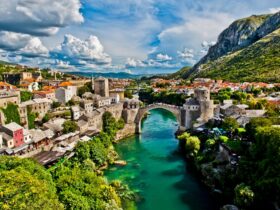Features to Check in Emergency Lights for Commercial Establishments
Emergency light kits are an essential feature for any residential or commercial establishment. They’re a life-saving tool in power outages, natural disasters, or manufactured hazards (e.g., fire). An alternative lighting system ensures a business remains operational, even if the main power supply is not working. Emergency lights are always necessary to avoid panic, guide emergency responders, and provide immediate illumination in working environments.
It’s not surprising why homeowners, business owners, and government institutions invest in emergency lighting. It comes in different types and functionality to suit a particular purpose. One example is surface-mounted lights and LED light bars for large vehicles. Even vehicles come with their LED lights to signal emergencies.
Shopping for the best emergency light in a diverse market filled with cheap products can be challenging. You have to ensure it’s durable enough to withstand unexpected power outages and other extreme conditions. The challenge is even more significant if you buy an emergency light for your commercial establishment. Therefore, we’ll discuss the qualities to look for when purchasing an emergency lighting system for your business.
Article Summary
show
Battery type
Emergency light batteries have various chemical formulations, such as nickel-cadmium (NiCad), nickel-metal hydride (NiMH), and sealed lead-acid (SLA). These formulations have specific charging strengths, weaknesses, and characteristics. Generally, it is recommended to pick the battery type to the manufacturer initially installed. In other cases, NiMH and NiCad batteries are interchangeable.
SLA and NiCad are the most common batteries used in emergency lights. SLA is one of the oldest rechargeable batteries. It contains lead alloy plates immersed in acid. Advances in technology led to the innovation of lead-acid batteries, which paved the way for fully sealed units that no longer require water to retain acid levels.
Emergency light batteries are also available in standard types, such as AA, C, D-sized, and other custom packages with multiple cells within a single unit. But pick the correct battery package and terminal connection for emergency light fixtures.
A battery capacity is measured in milliamp-hours (mAH) or amp-hours (AH). They represent how much energy a battery can deliver within a certain period. In most cases, several factors affect the power delivery of a storm.
Number of bulbs
Besides the batteries, the number of bulbs is another important consideration when buying an emergency light. You must consider the space, foot candle, and the light spread’s directional reach. To ensure maximum safety and effectiveness, the light fixture should provide enough visibility to help building occupants find their way easily when navigating hallways and locating the exit.
The best way to achieve the right illumination level for a single fixture with directional heads is by placing several units around the space. Make sure to pick the correct foot candle for every square foot.
Lamp type
Lamp type also matters when buying emergency lights. Incandescent bulbs are the most acceptable option since they’re not used constantly. Otherwise, LED bulbs are a great choice for better visibility, vibrant illumination, and a flicker-free feature.
Mount
Your choice of mount depends on your chosen aesthetic and personal preference. Most emergency lights are either wall-mounted or recessed. Wall-mounted fixtures are easier to install and can be placed anywhere, while an open option has a cleaner look but requires a more careful installation to ensure correct placement.
Codes
Codes are essential when sourcing emergency lights. Although the Occupational Safety and Health Administration (OSHA) doesn’t have specific regulations regarding emergency lighting, the National Fire Protection Association (NFPA) addresses the subject in the Life Safety Code. It states NFPA’s requirements for emergency lighting concerning the foot-candle, emergency light time, and maximum illumination. Each rule comes with a specific code to ensure the lighting system will provide a proper explanation in case of a power outage.
Warranty
Finally, always ensure the manufacturer offers a warranty for the emergency light fixture. You may also check if the seller provides a mechanism to make the lamp battery available once the current battery reaches its maximum lifespan.
Emergency lighting fixtures have only one fundamental purpose: to protect building occupants during power outages and unexpected disasters. While emergency lights come in different models, it’s crucial to pick the best one that suits your commercial establishment’s needs. Ultimately, you must carefully evaluate all available options depending on specific requirements to get the best value for your money.















